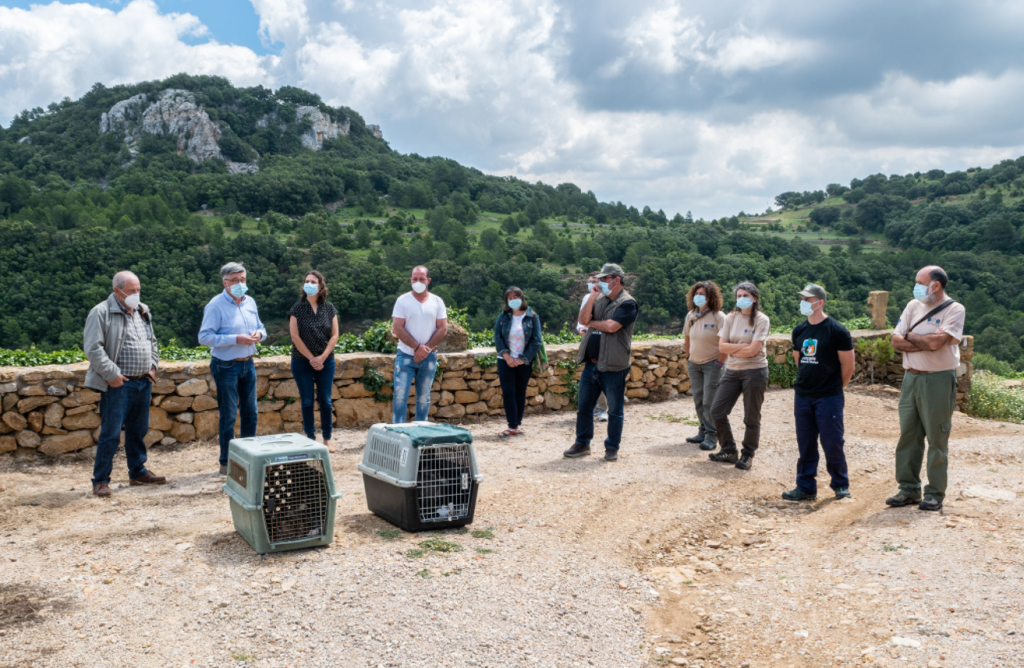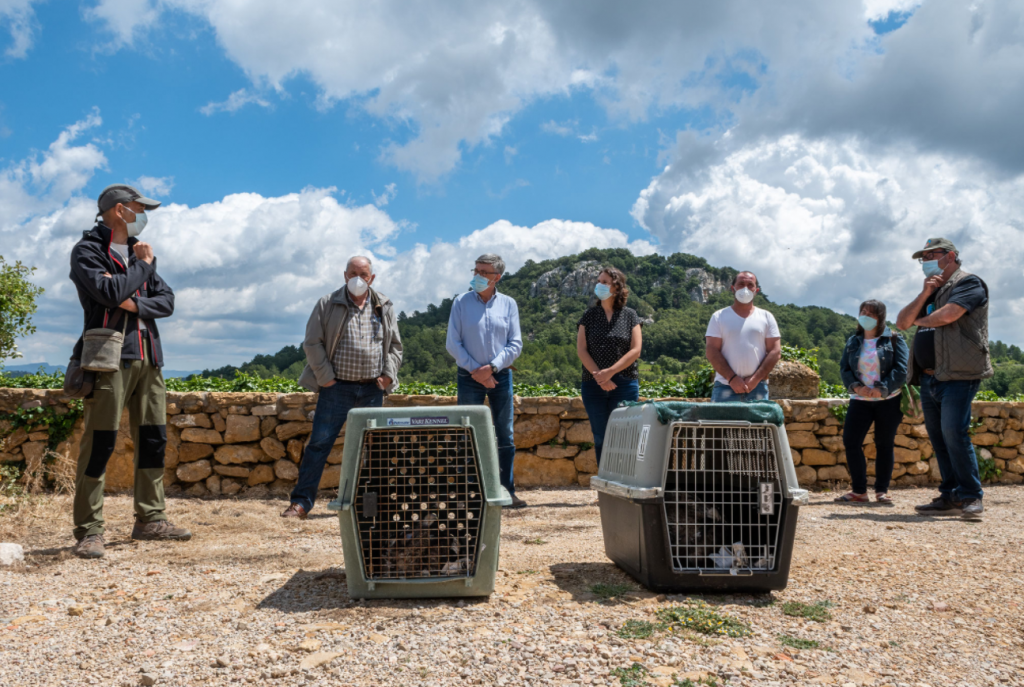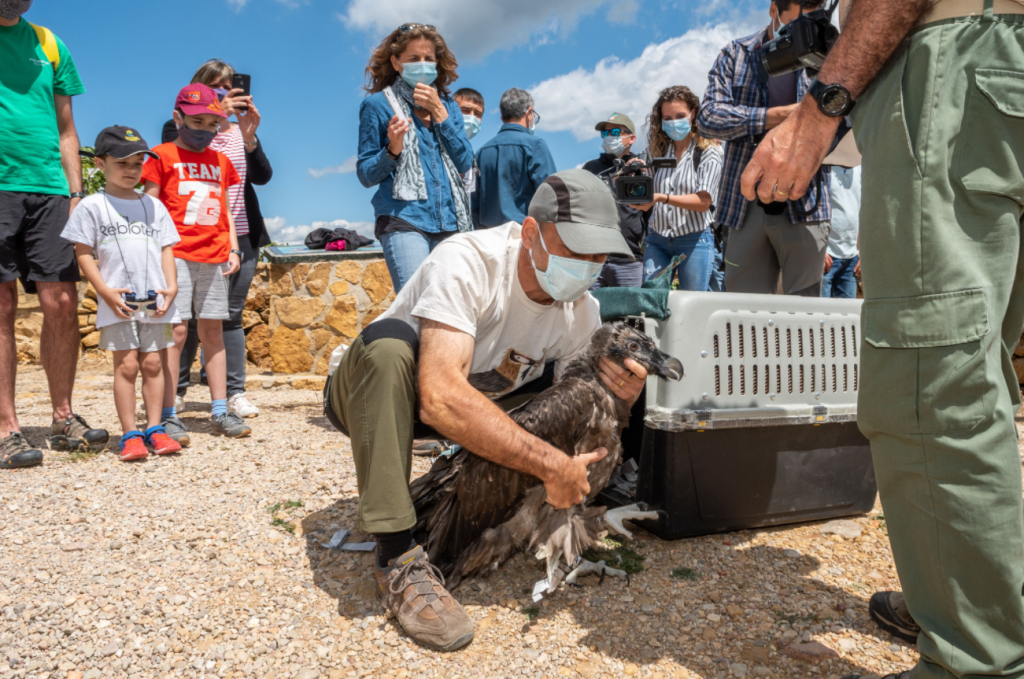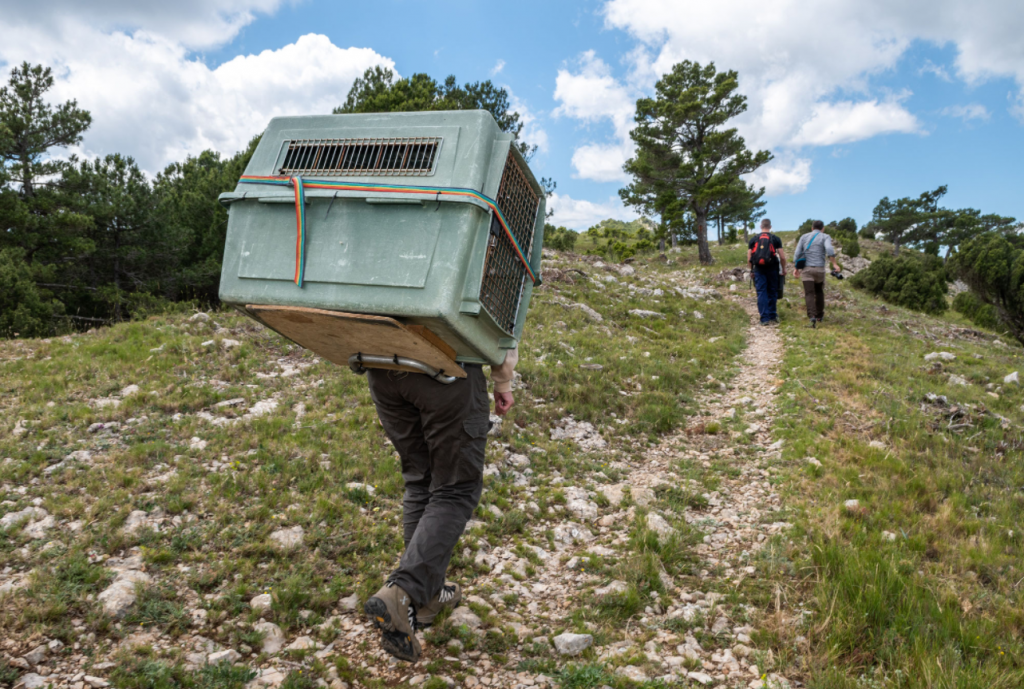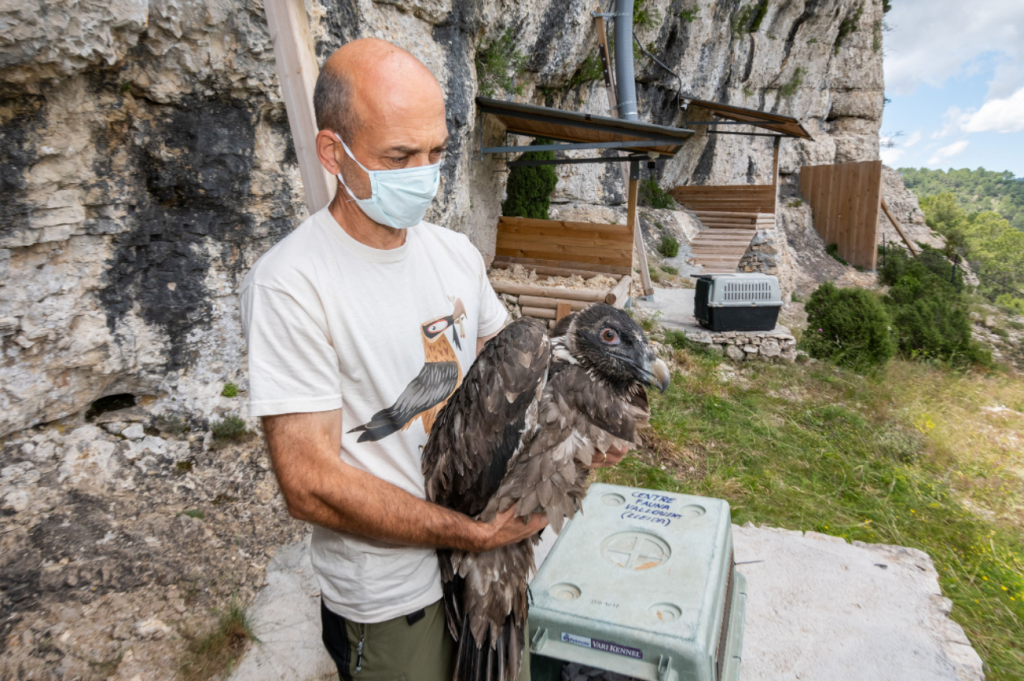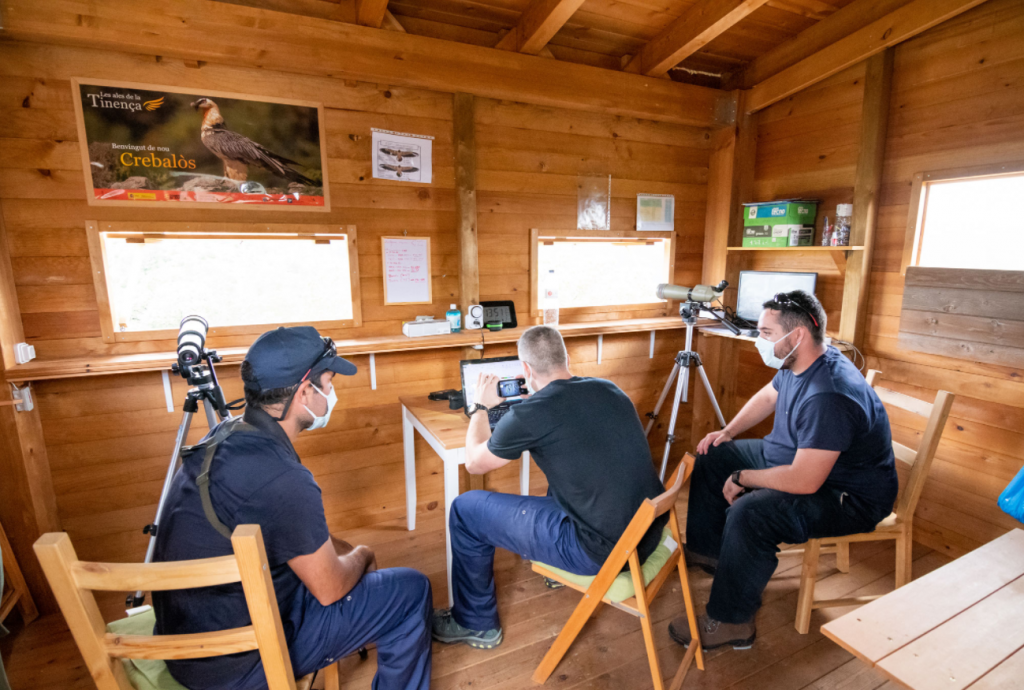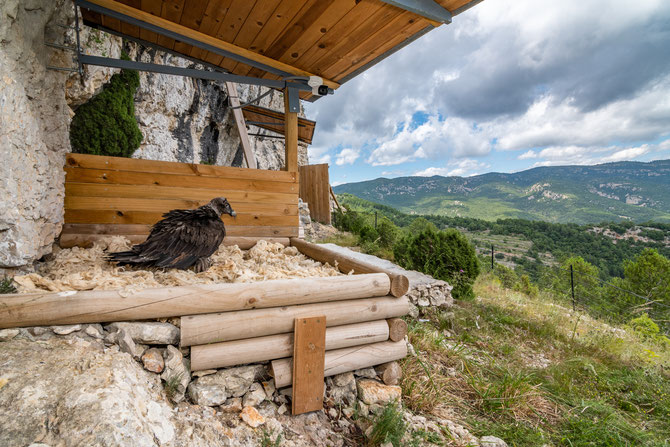
Our newest Bearded Vulture reintroduction project in Maestrazgo just released two more young Bearded Vultures! With the arrival of these two chicks, the project that started in 2018 reintroduced a total of six birds in this release area.
Releasing two Bearded Vultures to Tinença de Benifassà
The captive-bred Bearded Vulture comes from the Bearded Vulture Captive Breeding centre of Guadalentín in Cazorla. The Centre has been part of the Vulture Conservation Foundation’s (VCF) Bearded Vulture Captive Breeding Network (EEP) for years now, and it is also now managed by the VCF following an agreement with the Junta de Andalucía. The younger bird hatched at Vallcalent Specialised Breeding Centre in Lleida, also managed by the VCF, and was transferred to Guadalentín where it was adopted and naturally reared by Bearded Vultures.
On 12 June, the project team and the regional secretary of Climate Emergency and Ecological Transition, Paula Tuzón, released the two young Bearded Vultures in the (Castellón), which has been home to the reintroduction project ‘Benvingut de nou, Crebalòs’ since 2018.
We release Bearded Vultures using the ‘hacking method’, which is more or less the natural way of fledging. This method involves releasing chicks that hatched in captivity at an artificial nest in suitable habitat to acclimatize to the natural environment before they take their first flights. With this technique, the nestlings are able to associate the place where they are released with the area of hatching so that when they reach breeding age, which is around 8-10 years old, they select these places to breed. When Bearded Vultures are young, they tend to travel vast distances and explore new regions, but once they become sexually mature, they tend to select areas close to where they hatched to breed.
Paula Tuzón has referred to this project as “of great importance and relevance, firstly because it shows the necessary collaboration between different entities and administrations, and secondly because it is fully introduced into our rural world, in its development and in the fundamental role that the environment plays in people’s lives”. She then added, “Perhaps this year, more than ever, and due to the health crisis we are experiencing, we are more aware of the importance of biodiversity and how this makes us less vulnerable to crises that have to do with our interaction in the natural environment”.
Update from the reintroduced Bearded Vultures in Maestrazgo
With the arrival of these two new birds, there are now six chicks introduced in the region.
The first chicks arrived at Tinença on May 2018. Amic and Alòs are both males and also hatched in Guadalentín (Cazorla). Alòs remained in the area of reintroduction until September of that year, when he began to move through the Iberian System to reach La Rioja, between the Sierra de la Demanda and Picos de Urbión. He remained there until November, to return to the reintroduction zone where he remained until March 2019, when he moved to the Pyrenees where he has remained ever since. Amic has shown a greater attachment to the reintroduction area, from which he barely left. In the first months during June 2018, he travelled towards Riojan and Soria and returned to Tinença in October where he remained until the beginning of this year.
The chicks Boira and Bassi, the former from Guadalentín and the latter from Vallcalent, came to the Tinença on June 2019. Until October of that year, the two birds remained attached to Tinença but begun to explore the neighbouring regions since then.
Connecting populations of Bearded Vultures in Spain

The Maestrazgo region of Spain was historically a breeding site for Bearded Vultures and while there are no resident population the area is regularly visited by individuals released in Andalusia. The project to reintroduce the species to the region began in 2018 with the aim of establishing a wild breeding population that will bridge the populations in the Pyrenees and Andalusia, similar to the LIFE GYPCONNECT project in France that connects populations in the Pyrenees and the Alps. Over the course of the project captive-bred birds will be released in specially constructed hacking sites in the Parque Natural de la Tinença de Benifassà and in a unique experiment the team, in close consultation and collaboration with us here at the Vulture Conservation Foundation, will translocate adult non-breeding or floater birds from the population in the Pyrenees to the Maestrazgo region to test how effective this method is and if that has an effect on the reproductive productivity of the Pyrenean population. As part of the project the released birds will be monitored by fitting them with GPS transmitters to better understand how the move around the region and to encourage movements of birds to the region a series of supplementary feeding stations will be created.
The project is led by the Generalitat of Valencia, in collaboration with the Autonomous Communities from Aragón and Catalonia, the Spanish Ministry of Agriculture, Fish, Food and Environment and the us here at the Vulture Conservation Foundation.

